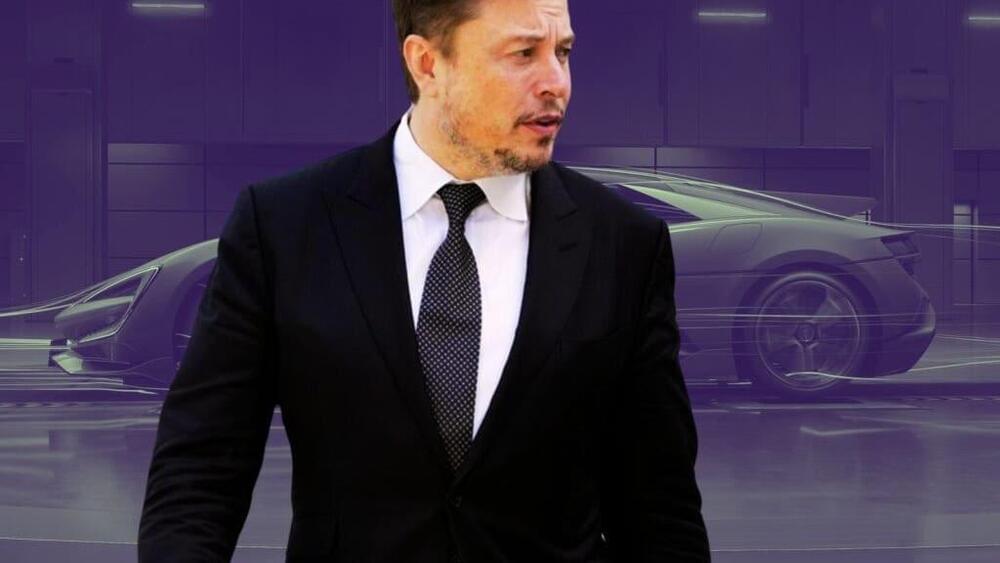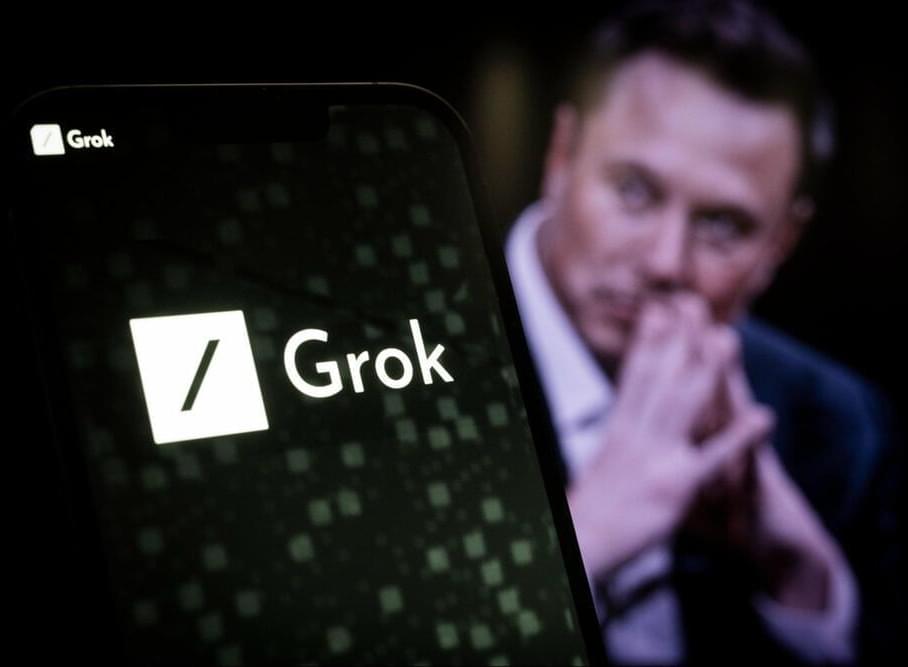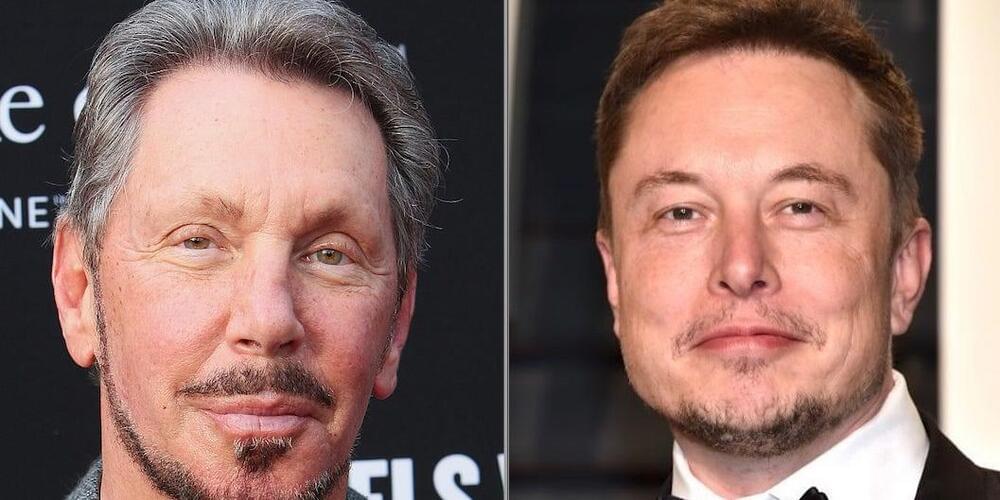Multiple Australian projects are on the cutting edge of neurotech breakthroughs and man-machine interfaces – raising questions of security and privacy for human minds.
Category: Elon Musk – Page 36

Elon Musk Predicts A ‘Universal High Income’ As Jobs Are Phased Out And Employment Becomes Obsolete — It’ll Be ‘Somewhat Of An Equalizer’
Elon Musk made some striking predictions about the impact of artificial intelligence (AI) on jobs and income at the inaugural AI Safety Summit in the U.K. in November.
The serial entrepreneur and CEO painted a utopian vision where AI renders traditional employment obsolete but provides an “age of abundance” through a system of “universal high income.”
“It’s hard to say exactly what that moment is, but there will come a point where no job is needed,” Musk told U.K. Prime Minister Rishi Sunak. “You can have a job if you want to have a job or sort of personal satisfaction, but the AI will be able to do everything.”


Grimes Using Custom Brain Interface From Elon Musk Competitor
Year 2023 😗😁
Famed musician and former Elon Musk boo Claire “Grimes” Boucher wanted a brain-computer interface (BCI) for her birthday — and one of Neuralink’s apparent competitors was happy to comply.
After Grimes tweeted about getting a “non invasive brain computer interface” for her birthday, AJ Keller, the CEO of the startup Neurosity, confirmed in an interview with Insider that his firm had indeed made a custom brain gadget for the “Kill V. Maim” singer.
While a tech company sending a nerdy sci-fi celebrity fan a gadget wouldn’t really be news on its own, the fact that Grimes is the mother to two of Musk’s children and is seemingly on pretty acrimonious terms with the Canadian-South African billionaire, who owns perhaps the most famous and one of the most controversial BCI companies in the world, makes this story incredibly juicy.


Tesla Summon to get major improvements, Autopark gets a new name
Tesla Summon and Autopark are set to gain major improvements next month, according to company CEO Elon Musk. Autopark is also getting a new name, Musk said, as it appears to be on its way to being called “Banish.”
After Musk stated earlier this month that Tesla would have some “really cool stuff coming this month and next,” owners and fans of the company were left with their own imaginations to think of what could possibly be coming.
While many owners have wished for improvements of things like the Auto Wipers, Tesla has been working behind the scenes to improve some of its semi-autonomous driving features and certain parts of Enhanced Autopilot, including Summon and Autopark.
Sam Altman: OpenAI, GPT-5, Sora, Board Saga, Elon Musk, Ilya, Power & AGI | Lex Fridman Podcast #419
1:05 — OpenAI board saga 18:31 — Ilya Sutskever 24:40 — Elon Musk lawsuit 34:32 — Sora 44:23 — GPT-4 55:32 — Memory & privacy 1:02:36 — Q* 1:06:12 — GPT-5 1:09:27 — $7 trillion of compute 1:17:35 — Google and Gemini…
Sam Altman is the CEO of OpenAI, the company behind GPT-4, ChatGPT, Sora, and many other state-of-the-art AI technologies. Please support this podcast by checking out our sponsors:
- Cloaked: https://cloaked.com/lex and use code LexPod to get 25% off.
- Shopify: https://shopify.com/lex to get $1 per month trial.
- BetterHelp: https://betterhelp.com/lex to get 10% off.
- ExpressVPN: https://expressvpn.com/lexpod to get 3 months free.
TRANSCRIPT:
https://lexfridman.com/sam-altman-2-t…
EPISODE LINKS:
Sam’s X: https://x.com/sama.
Sam’s Blog: https://blog.samaltman.com/
OpenAI’s X: https://x.com/OpenAI
OpenAI’s Website: https://openai.com.
ChatGPT Website: https://chat.openai.com/
Sora Website: https://openai.com/sora.
GPT-4 Website: https://openai.com/research/gpt-4
PODCAST INFO:

India cuts import taxes on EVs in win for Tesla’s entry plans
India will lower import taxes on certain electric vehicles for companies committing to invest at least $500 million and setting up a local manufacturing facility within three years, a policy shift that could potentially bolster Tesla’s plans to enter the South Asian market.
Companies must invest a minimum of $500 million in the country and will have three years to establish local manufacturing for EVs with at least 25% of components sourced domestically, according to a government press release on Friday. Firms meeting these requirements will be allowed to import 8,000 EVs a year at a reduced import duty of 15% on cars costing $35,000 and above. India currently levies a tax of 70% to 100% on imported cars depending on their value.
The policy change is likely going to pave the way for Tesla to enter India, as the Elon Musk-led company has been in talks with the government to lower import duties on its electric cars for years. The move also aligns with India’s goal to boost the adoption of EVs and reduce its dependence on oil imports, with the country setting a target of achieving 30% electric car sales by 2030.
This New Robot Is So Far Ahead of Elon Musk’s Optimus That It’s Almost Embarrassing
Tesla’s Optimus is taking baby steps while OpenAI’s Figure 1 is doing burnouts on the track.

Larry Ellison and Elon Musk teaming up to bring AI to farming
Elon Musk’s SpaceX is teaming up with Larry Ellison’s Oracle to help farms plan and predict their agricultural output using an AI tool.
Larry Ellison said on Oracle’s earnings call on Monday that it’s collaborating with Musk and SpaceX to create the AI-powered mapping application for governments. The tool creates a map of a country’s farms and shows what each of them is growing.
The Oracle executive chairman said the tool could help farms assess the steps needed to increase their output, and whether fields had enough water and nitrogen.